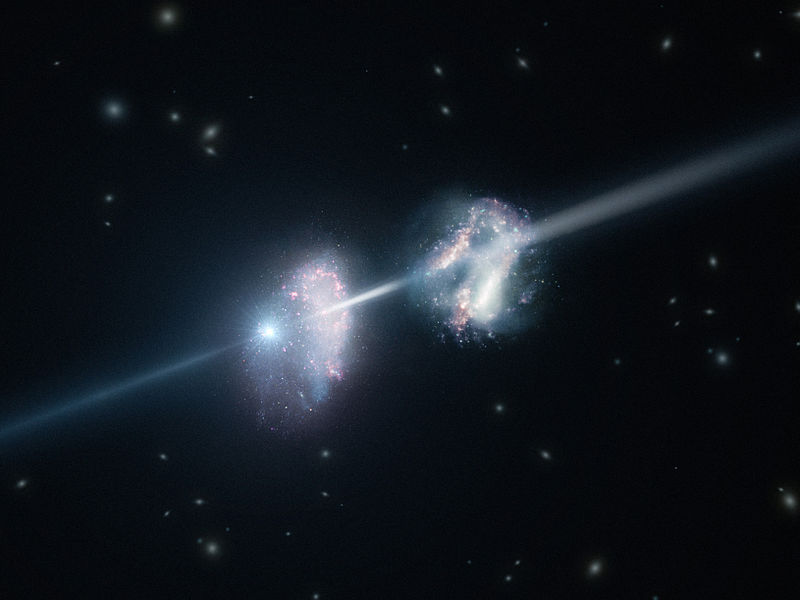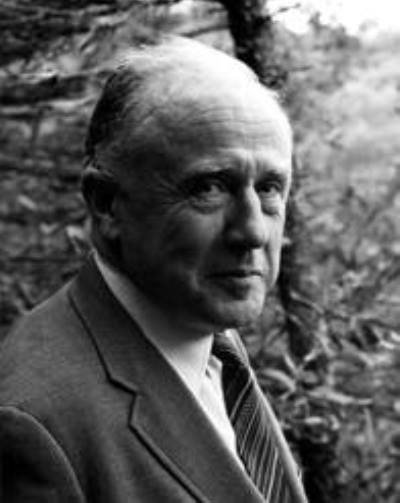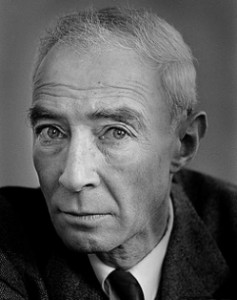 So. Everybody got excited about gravitational waves coming from the mergers of neutron stars and black holes. My Facebook feed which is full of scientists and science writers got further excited about a newish phrase everybody used, “multimessenger astronomy.” My Facebook feed agreed that “multimessenger astronomy” is an all-around dreadful phrase. Not only does it sound corporate and canned but even astronomy writers don’t immediately know what it means. It means astronomy done not only with the usual messengers, that is, all the wavelengths of light; but also with elementary particles called neutrinos and cosmic rays and of course, with the disturbances in space/time called gravitational waves. If explaining a name takes a sentence that long and complicated, the name is not good.
So. Everybody got excited about gravitational waves coming from the mergers of neutron stars and black holes. My Facebook feed which is full of scientists and science writers got further excited about a newish phrase everybody used, “multimessenger astronomy.” My Facebook feed agreed that “multimessenger astronomy” is an all-around dreadful phrase. Not only does it sound corporate and canned but even astronomy writers don’t immediately know what it means. It means astronomy done not only with the usual messengers, that is, all the wavelengths of light; but also with elementary particles called neutrinos and cosmic rays and of course, with the disturbances in space/time called gravitational waves. If explaining a name takes a sentence that long and complicated, the name is not good.
During the Facebook conversation, somebody suggested putting the astronomers good at naming things — like, for instance, “dark energy” — in charge of naming everything. Then somebody else said that John Wheeler had been excellent at it, naming among other things, “black holes.” At that point I got all pedantic and as any discussion does in the face of pedantry, the Facebook discussion turned in another direction.
Anyway, since black holes are famous again, I thought you’d like to know some gossip about who thought them up in the first place and who named them. It was a couple of physicists’ heroes who happened also to have thought up the nuclear bomb, Johnny and Oppie.† They didn’t like each other.


Physicists, like the ancient Greeks, like to gossip about their gods. A few days ago, three physicists* were talking on Twitter** about a review by a fourth physicist, Freeman Dyson, of a biography of one of these gods, J. Robert Oppenheimer, and about his war with another one, John Archibald Wheeler.
Physicist #1: Oppenheimer did the breakthrough work on black holes.
Physicist #2: Isn’t it ironic that Wheeler gets credit for inventing black holes?
Physicist #3: Dyson’s review doesn’t talk about Wheeler’s bitter rejection of Oppenheimer’s black holes and Oppenheimer’s antipathy toward Wheeler.
Physicist #2: So interesting. Maybe Oppenheimer wasn’t accustomed to challenges? And then Wheeler invents the phrase, “black hole”, and Oppenheimer never uses it.
Physicist #1: “. . .[the star] like the Cheshire cat, fades from view. One leaves behind only its grin, the other . . .”
Physicist #1: “. . . only its gravitational attraction.” – John Wheeler 1967
Physicist #3: I heard Oppenheimer sat outside the auditorium when Wheeler was giving the talk that conceded that black holes form.
Physicist #2: I remember now, that story is in Kip Thorne’s book***.
Me: Oh my what a story!
Physicist #1: I’d just like to 100% endorse @AnnFinkbeiner’s tracking it all down.
And off I go to find Kip Thorne’s book. And Wheeler’s autobiography. And Dyson’s review. And the Web of Stories online interviews. And to fall thoroughly down the rabbit hole, where it’s dark and lonely but, you know. Interesting.
§
Oppenheimer was called Oppie and Wheeler was called Johnny. Oppenheimer was a show-off and good at it, also restless and impatient; Wheeler talked quietly with pauses so long you thought he’d gone to sleep. Oppenheimer was personally remote; Wheeler was curious about everyone – “what is your great white hope?” he liked to ask. Oppenheimer looked like he knew things you wouldn’t care to; Wheeler looked blue-eyed and innocent. Oppenheimer was older: Wheeler had considered then decided against being Oppenheimer’s student. They spent much of their careers together, in small-town Princeton, NJ. Kip Thorne says their confrontation was inevitable.
§
In 1939, Oppenheimer explained how a giant star runs on thermonuclear fusion until it’s out of fuel, then implodes and cuts itself off from the rest of the universe. He published this on September 1; the same day, Wheeler published with Niels Bohr the explanation of atomic fission. Also that day, Hitler invaded Poland.
Before Oppenheimer could follow up on the gravitational cutoff idea, he became head of the Manhattan Project and directed the building of the fission bomb. “In some sort of crude sense which no vulgarity, no humor, no overstatement can quite extinguish,” he said, “the physicists have known sin; and this is a knowledge which they cannot lose.” Wheeler also paused his pure research and became scientist in charge of producing the bomb’s plutonium fuel at the Manhattan Project’s Hanford plant. While Wheeler was there, he heard that his brother, who was fighting in Italy, was missing in action. “It was a year and a half before his body was found – well, I can’t call it his body – his skull and his skeleton,” he said. “I always think to myself that if I’d only gotten going sooner on making plutonium for a bomb, I could have saved his life.”
By 1949, the Manhattan Project had succeeded and the next bomb up — the hydrogen bomb that operated not on fission but fusion — had been designed. Wheeler and Edward Teller were in favor of building it and Wheeler, probably with his brother in mind, directed some of the massive design calculations. Oppenheimer was opposed to it: it was sin all over again, could be used only to slaughter civilians, and almost certainly wouldn’t work. Wheeler heard that Oppenheimer said, “Let Teller and Wheeler go ahead. Let them fall on their faces.” But the calculations showed the design would in fact would work and that, Wheeler wrote, “turned Oppie around.” By 1952, Oppenheimer was saying the hydrogen bomb was “technically so sweet” that he couldn’t argue with it.
§
One night in January, 1953, Wheeler took some classified documents – violating common sense and every regulation — to Washington DC on the train. He went to the bathroom and when he came back, the documents were gone. He looked everywhere, asked the porter and fellow passengers, no luck. Once the train got to DC, the car was disconnected from the rest of the train and searched, as was the train track from Trenton to DC, as were Wheeler’s home and office. The documents were never found. The documents were on lithium 6, one of the fuels then being considered for the hydrogen bomb and may or may not have also included information about nuclear spying. Wheeler was yelled at by the highest authorities.
The documents had been put together by a colleague of a Congressional staffer named Bill Borden. Borden was convinced that a traitor was blocking the plans for using lithium 6 and slowing the development of the hydrogen bomb, and that furthermore, Oppenheimer was probably an agent of the Soviet Union. The story that Wheeler’s lost documents helped trigger the cascade of investigations into Oppenheimer’s loyalty is almost certainly purest blue-sky nonsense, but it still floats around and confuses the innocent. ‡
Regardless, in 1954, Oppenheimer was subject to a security hearing. The night before Edward Teller’s killer testimony against Oppenheimer, Teller and Wheeler sat in a DC hotel room, Teller unhappily trying to figure out how to testify. “Edward,” Wheeler said, “tell the story as you see it.” Oppenheimer lost his clearances.
§
By the time all this was over, Oppie no longer cared about the deaths of massive stars. But Johnny went back to what came to be called relativistic astrophysics.
In 1958, they went to the same conference on cosmology in Brussels. Wheeler gave a talk arguing with Oppenheimer’s research from 20 years before. Wheeler said couldn’t believe that a star of great mass would implode into anything denser than a neutron star. Oppenheimer politely asked from the audience whether the simplest scenario wouldn’t have the mass condensing to the point of disappearing from the universe. Wheeler politely disagreed; he couldn’t believe it was physically plausible.
A year or so later, computer simulations based on the codes used to simulate fusion bombs showed that a massive star living on thermonuclear fusion would die by imploding into invisibility. Wheeler was convinced and — as Oppenheimer had a few years before about the fusion bomb — turned around. But Oppenheimer didn’t seem to care, certainly wasn’t pleased. In 1963, Wheeler and Oppenheimer were at another conference together. Wheeler gave a talk full of enthusiasm about stellar implosion and Oppenheimer’s early work. Oppenheimer sat outside the hall on a bench, Thorne wrote, “chatting with friends about other things.”
In 1967, Wheeler was giving yet another talk and said offhand that after you say “gravitationally completely collapsed objects” enough times, you start looking for another name. Somebody from the audience yelled, “How about black hole?” Wheeler said he’d been looking for the right name for months – in his car, in his bed, in the bathtub – and suddenly this name seemed exactly right. He decided to use “black hole” casually “as if it were an old familiar friend,” and wondered, “Would it catch on? Indeed it did.” Every schoolchild uses it, he wrote. ****
Dyson thought that Oppenheimer’s early work was among “really the most substantial contributions to physics that he had ever made.” Oppenheimer “lived for twenty-seven years after the discovery, never spoke about it, and never came back to work on it,” Dyson said. “Several times, I asked him why he did not come back to it. He never answered my question, but always changed the conversation to some other subject.”
§
Oppie’s and Johnny’s war doesn’t sound titanic. Their arguments were the usual scientific disagreements and ended in not-unusual ways, with evidence forcing agreement. Their antipathy seemed personal. Dyson wrote that Oppenheimer never took Wheeler’s work seriously. Wheeler wrote that Oppenheimer was complex: “I never felt that I really understood him. I always felt that I had to have my guard up.” Thorne quotes a physicist and close friend of Oppenheimer’s saying that Oppenheimer was widely interested in religions and felt uncomfortable at physics’ borders. Anyone meeting Wheeler knew that the borders of physics, or just outside them, was where he lived.
So what to make of their long war? Maybe just what humans have always made of the wars of the gods: awe, some confusion, and good for a gossip.
___
I interviewed Johnny — I didn’t call him that — a number of times. I never met Oppie, who died young. Kip Thorne just won the Nobel Prize for physics for his work on gravitational waves, some of which he did with Johnny.
___
† The original post is worth revisiting for the intelligent and informative comments.
*I count astrophysicists.
**I paraphrase without necessarily assigning the tweets to the right physicists.
***Kip Thorne was Wheeler’s student; later they co-wrote, with Charles Misner, what is still the standard text on gravitation, called Gravitation.
**** I deleted a sentence about Oppenheimer never using the phrase, “black hole,” because it turned out to not be true. See the comments in the original post.
‡ Historian Alex Wellerstein has the thoroughly-researched and accurate but still highly-readable version of this story, which is way more complicated and weird than the one I wrote: https://physicstoday.scitation.org/doi/10.1063/PT.3.4364
______
Photo credits: John Archibald Wheeler – used with the kind permission of Dr. Roy Bishop, via the AIP Emilio Segre Visual Archives; J. Robert Oppenheimer – by Alfred Eistenstaedt, via Flickr user, James Vaughan
The picture at the top of the post (courtesy of ESO/L Calçada, via Wikimedia Commons) is art, not reality; and it’s related tangentially. The bright flash on the left is a burst of gamma rays, now thought to come from two neutron stars merging. When they merge, they spin up into a single something-or-other that sends out jets of light. The jets are shown hitting two galaxies, but they’re irrelevant. What’s relevant is what you can’t see and astronomers couldn’t either until now: gravitational waves are whamming out in all directions at the speed of light. You probably didn’t want to know all this but I needed to mention it.
The very worse thing about “multimessenger” is the “messenger” bit – it implies that something out there is trying to tell us something.
Peter, someone suggested that messenger refers to Galileo’s Sidereal Messenger. I doubt that that’s true but I choose to believe it is. I really can’t find out who made that name up